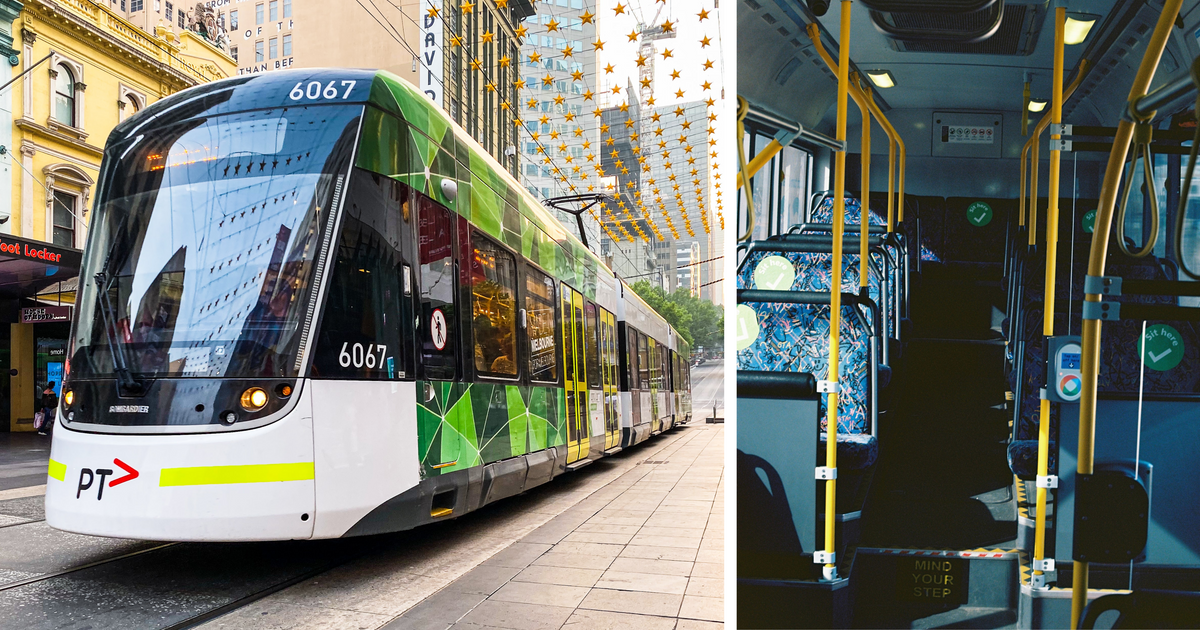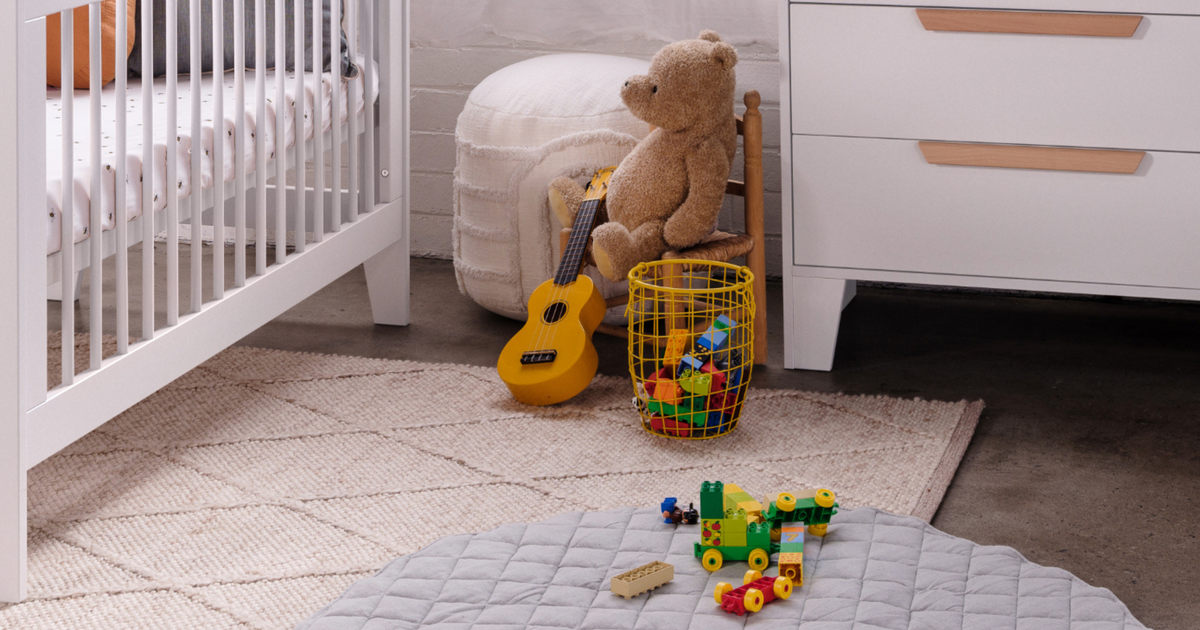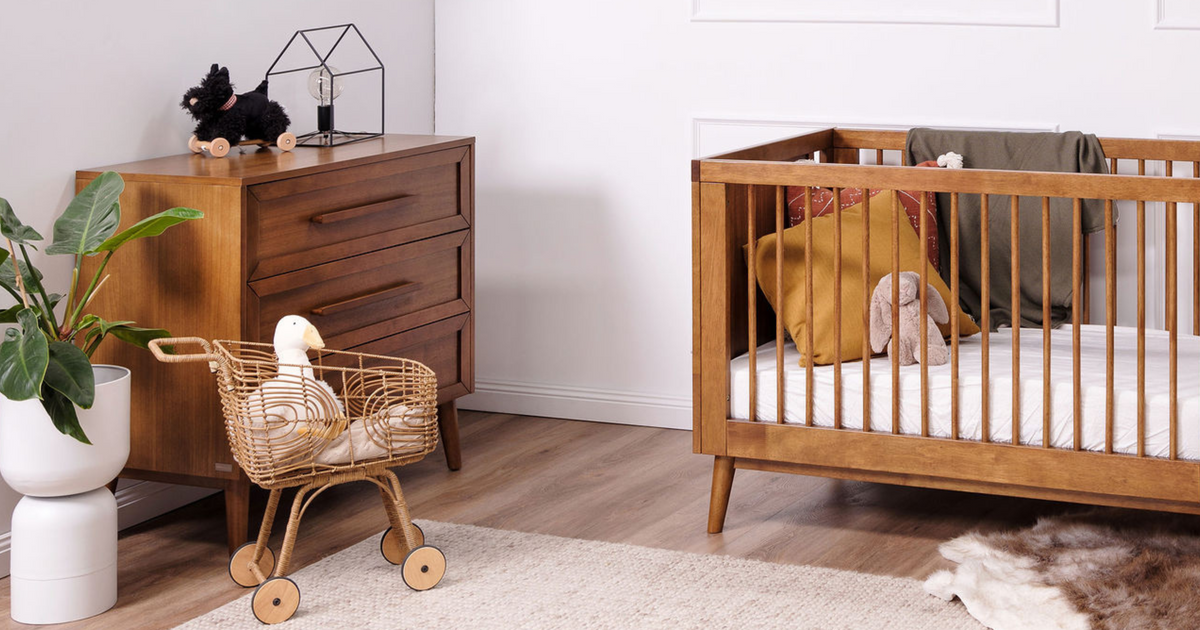How to navigate public transport with a pram in Australia

How do you like to get around? Depending on where you live, you could be utilising bus, tram, train or even ferry services to get from A to Z. In fact, according to the 2021 ABS figures, as many as one in seven Australians use public transport, with these numbers being even higher pre-Covid. Whether for convenience, necessity, cost or sustainability reasons, hundreds of thousands of Aussie households get by fine without a car amongst them (ABS, 2021).
If that’s you and you’re expecting a baby, you may be wondering if it will still be feasible to get around using public transport with a little one, nappy bag and pram in tow.
The good news is that public transport in (metro) Australia is better than many places across the world. However, it still has a way to go when it comes to accessibility. Sadly, accessibility isn’t something most people think of until they need to, and consequently, many of our systems haven’t been designed with disabilities or prams in mind.
However, with a bit of preparation, you’ll be navigating public transport with a pram like a pro in no time. Join us as we cover some of the tips and tricks to make public transport work for you as a new parent.
Tips and tricks to make travelling with a pram easier
-
Avoid rush hour
Choosing a quieter time of day is sure to make travelling on any form of transport much less stressful. Not only will getting the pram in and out be much easier without impatient commuters trying to get to work, but your chances of finding an easy place to park your pram once onboard increase significantly. Even if you’re a seasoned ‘PTer’, doing a trial run (or two) during a quiet time of day can help you adapt to any unexpected challenges and build your confidence travelling with a pram.
-
Choose a lightweight, compact pram
More practical for everyday use than travel strollers but still light, compact, with a one-hand fold, and luxuriously stylish to boot, the Cybex Mios pram is a great everyday travel companion for city parents. Alternatively, choose from the GB travel stroller range for super light prams designed for quick folding... without compromising on comfort.
-
Research accessible platforms/ stations beforehand
Many public transport apps have wheelchair icons to identify accessibility-friendly buses, trams or trains, as well as stations, platforms, wharves etc. If this not the case where you live, you should be able to find a timetable of accessible stations on your state’s public transport website.
-
Ensure the driver sees you
Get on the train, bus or tram as close to the driver or conductor as you can, or give them a wave so they can see you. If they are aware of you, they are more likely to wait until your pram is secure before moving.
-
Ask for help
Don’t be afraid to ask for help from drivers or other passengers where needed. Drivers are trained to ensure you get to your end destination safely, and will be more than able to assist you with your pram if you are struggling.
-
Enter and exit more efficiently
The safest way to enter the vehicle or carriage is with the pram in front of you, not behind, by lifting the front wheels over the gap, and exiting backwards with the pram behind you when leaving. Try and board as early as possible to give you enough time to apply the pram’s brakes while other passengers board.
-
Wait safely
Remember to stand behind the line at platforms and distance yourself from the curb edge at bus stops. While waiting, position your pram parallel to the edge of the platform and apply the footbrake to avoid the risk of the pram rolling. Always use the wrist strap and never let go of the pram or leave it unattended.
-
Remove hanging shopping bags
While onboard any form of transport, its best to unhook any bags that are hanging from the pram that could cause it to tip over. Be aware that any bags hanging from the sides of the pram could also get caught as you go through the doors of the tram, bus, etc.
-
Bring entertainment
The older your child becomes, the more entertainment they might need to occupy them or distract them from wanting to run around outside the pram. The safest place for your baby or toddler on public transport is secured inside their pram.

Image by John Simmons on Unsplash
Trains
Trains are quite straightforward in terms of accessibility. While you may come across some with stairs, most trains are low to the ground with minimal space between doors and the platform. The main challenge you are likely to face is at smaller train stations that only have stairs to go between platforms. Either plan ahead and look for accessible stations, or pack light and use a quick-fold, compact pram that’s easy to carry like the clever Cybex Mios or a travel stroller from the GB range.
It’s just as important to ensure your pram’s brakes are on while waiting for the train to arrive as it is while you’re inside the carriage to avoid the pram rolling away unexpectedly. Once onboard, look for the accessibility zones for an easy place to park your pram.
Trams
Iconic features of many of our cities, most trams have become more accessible in recent years. While older models usually have three or four stairs, making getting on and off quickly a bit of a challenge with a pram, newer models are lower to the ground and offer more standing space and designated accessibility zones. In addition to the trams themselves, we’ve also seen an increase in councils improving the accessibility of tram stops by introducing raised platforms. Until this is universal, a quick tram stop accessibility check on sites such as tramTRACKER or Trip Planner can help you best plan your trip.
Once inside, quickly park your pram in a designated wheelchair space with the brakes on and ensure your child is securely strapped in before the tram begins moving.
Buses
Many buses can lower their sides to make entry with a pram easier. If this is not possible and you are having trouble, you can ask the bus driver for a ramp. The designated accessibility area tends to be at the front of the bus, which is helpful in case you need to ask the driver for any assistance.
Once on board, simply apply the pram’s brakes, positioning the front of the pram to face the back of the bus, ensure your little one is strapped in and then grab a seat, holding onto the pram. Some buses have a tether or restraining device you can attach to your pram’s handle. If you are anxious about the bus moving before your pram is secure, ask the driver to wait as you board and most will be more than happy to comply.
Ferries
Ferries and CityCats are popular transport methods in Brisbane and Sydney. These are straightforward to navigate with designated wheelchair spaces and ramps to enter and exit. Be aware that some older terminals/wharves may have stairs, impeding easy access. Unless you have a light travel pram, it’s best to plan ahead; most public transport apps will help you identify accessible locations for a stress-free trip.
As usual, park your pram in a designated wheelchair space with the brakes on and ensure your child is securely strapped in. If you decide to brave peak hour and the wheelchair space is occupied, you may need to fold and store the pram in a luggage rack and hold your little one.

Image by Aldrino on Unsplash
Local support services
Many states offer support services to those within the community. For example, Public Transport Victoria hosts community events to help people feel more confident using the various public transport options available. If you feel anxious about attempting travel with a pram for the first time, these could be a great option. They also have a contact number for questions regarding using public transport and practicing on a stationary tram, train, bus or coach.
The ideal pram for navigating public transport
The right pram will make getting around easier, not harder. That’s why we recommend the Cybex Mios or the GB travel stroller range for parents on the move. Discover which one is best suited to your needs below:
Cybex Mios
Lightweight and compact, the Cybex Mios’ one-hand fold functionality means holding baby in one arm while folding and carrying the pram with the other requires minimal time or effort. Don’t let train stations without lifts or trams with stairs stop you from going where you need to go!
Designed in Germany, the Mios is carefully crafted using high quality materials that will withstand the wear and tear of a busy life. Part of a 3-in-1 travel system, you can seamlessly switch between Seat, Cloud Q Capsule and Carry Cot modes, with all three suitable from birth due to the Seat’s lie-flat design. Measuring a mere 50 cm in width, navigating packed or narrow spaces like public transport is a breeze.
The Mios is the perfect intersection between the lightweight and compact design of travel strollers, and the style, storage and comfort of high-end ‘everyday’ prams.

GB travel strollers
If you’re a regular commuter or traveller, we understand that light and compact designs will trump storage and style Every. Single. Time. Afterall, you just want to get your little one in and out of the tram or up and down the stairs with as little exertion as possible. That’s not too much to ask... right?
We’ve got you covered. Discover the GB travel stroller range. Between the GB Pockit Air (the smallest when folded and lightest travel stroller on the market), GB Pockit+ (with a semi-recline seat and capsule compatibility) and GB Qbit+ (a luxury design with full lie-flat seat, making it suitable from birth), we know there is a perfect fit for your exact needs.
Unlike many travel prams that come to mind, they may be light and compact, but they are certainly not flimsy or eyesores... and did we mention they each have 5kg of storage capacity as well?
Read Choosing a travel stroller for more in-depth information on each of the GB strollers’ features and benefits.

Cybex Mios and GB travel range comparison
This table provides an overview of the main specifications. Compare the features that are most important to you to help you decide the best fit for your family.
| GB Pockit Air | GB Pockit+ | GB Qbit+ | Cybex Mios 2017 | |
 |
 |
 |
 |
|
| Folded dimensions | 18 x 30 x 35cm | 20 x 34 x 42cm | 58 x 43 x 27cm | 75 x 50 x 33cm |
| Weight | 4.6kg | 4.7kg | 7.5kg | 8.7kg |
| Airline Compatible* | Yes | Yes | Yes | Checked in only |
| Suitability | 6 months - 22kg | 6 months - 22kg | Birth - 22kg | Birth - 22kg |
| Compatible with capsule / bassinet | No | Yes | Yes | Yes |
| Fold | 2-hand | 2-hand | 1-hand | 1-hand |
| Self-standing when folded | Yes | Yes | Yes | Yes |
| Recline | None | Partial | Full | Full |
| Parent / forward facing | Forward | Forward | Forward | Parent and forward |
| Lockable front wheels | Yes | Yes | Yes | Yes |
| Storage basket capacity | 5kg | 5kg | 5kg | 5kg |
| UPF50+ sun canopy | Yes | Yes | Yes | Yes (separate or bundle purchase) |
*Each airline has their own carry on luggage requirements. Check with your airline before flying to ensure you will be allowed to take your stroller on board.
At the end of the day, with some preparation and the right tools, navigating public transport with a pram is very doable… and with a bit of practice, it can even be seamless.
Anstel has a team of passionate expert representatives. Get in touch with us today with any questions about your pram needs.
Further reading:
- Tips for taking your newborn home from the hospital
- Choosing a travel stroller
- How to clean and maintain your pram
- 8 tips for travelling with a baby
- Cybex Sport: Introducing the Avi and Zeno sports strollers
Pram comparisons:
- Cybex Priam 2020 vs 2022 comparison: What's changed?
- Comparing the Cybex Balios S Lux, UPPAbaby Cruz V2 and Bugaboo Cameleon 3 Plus


